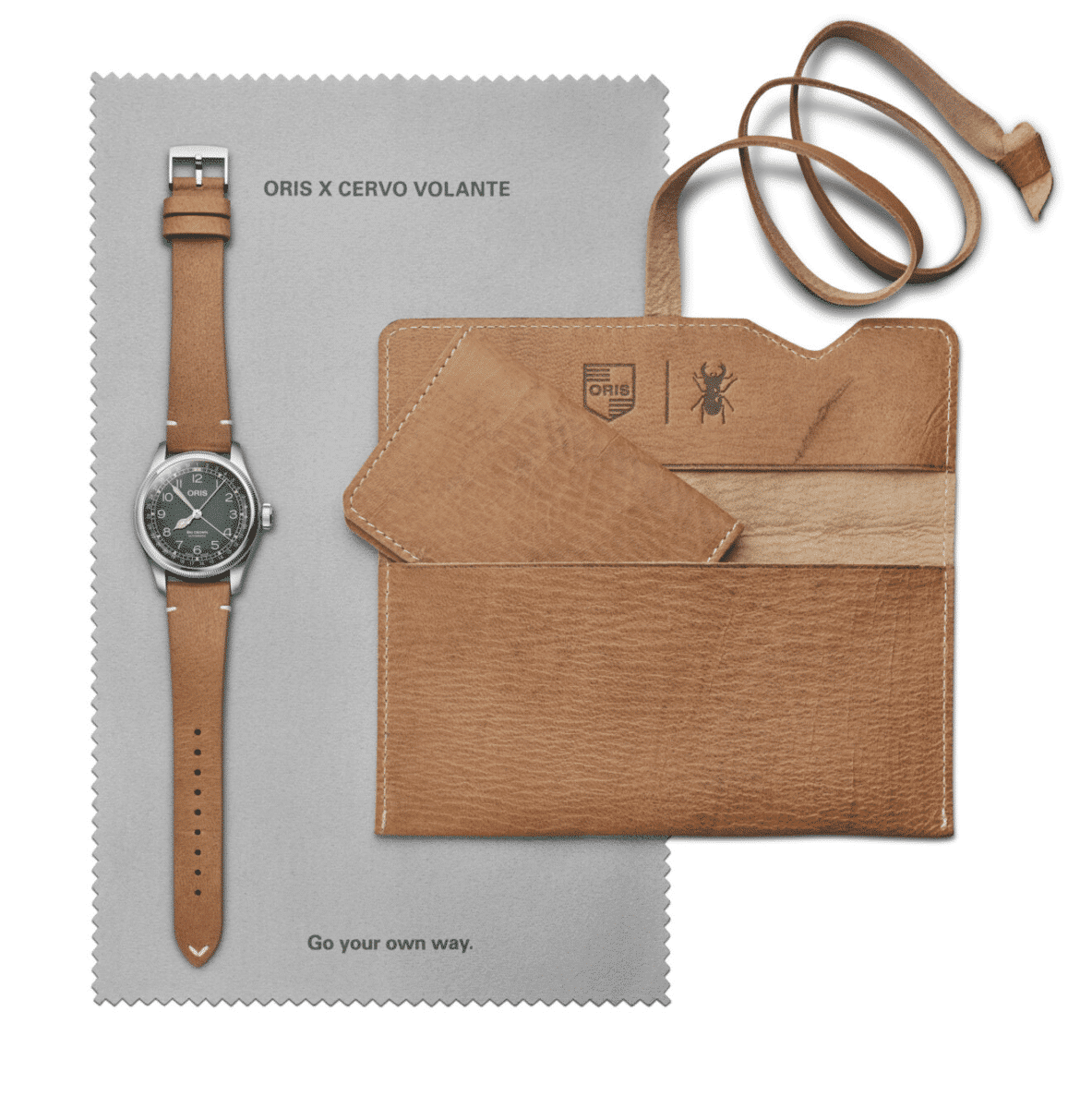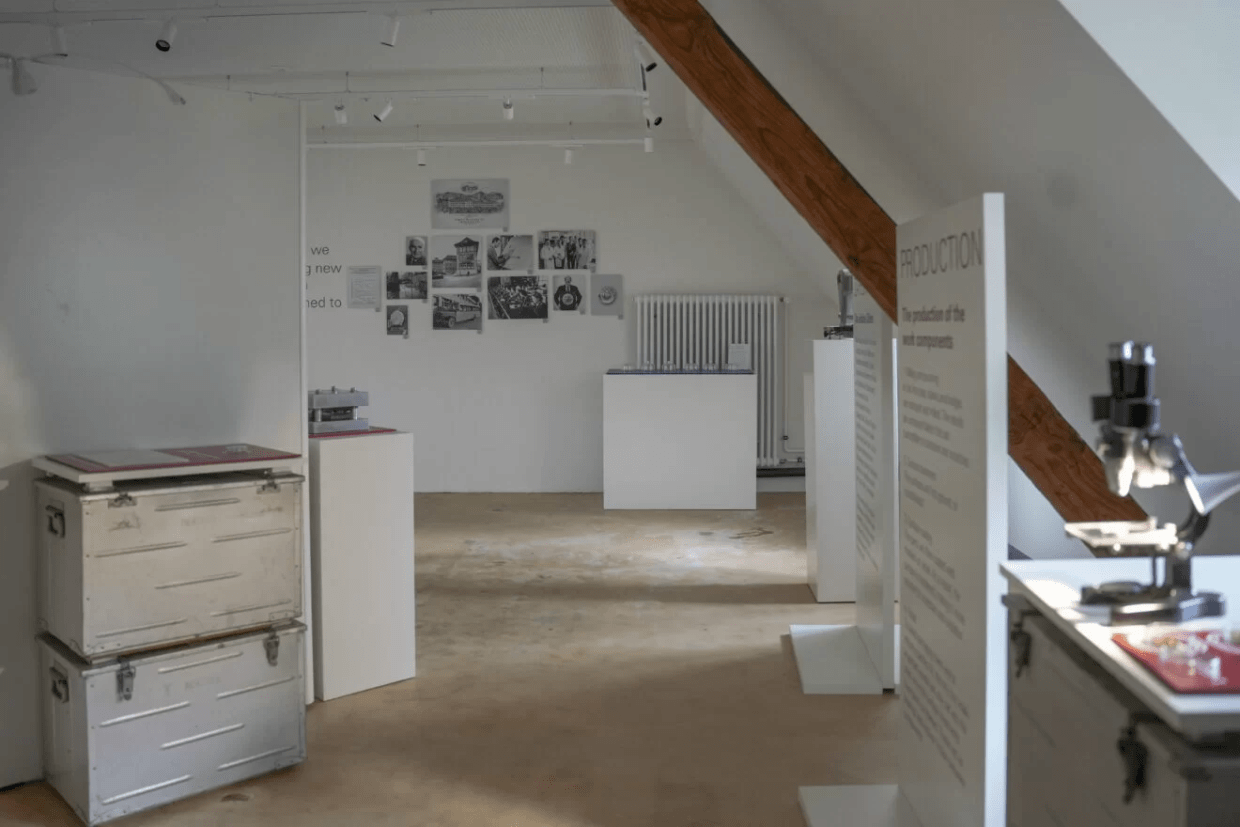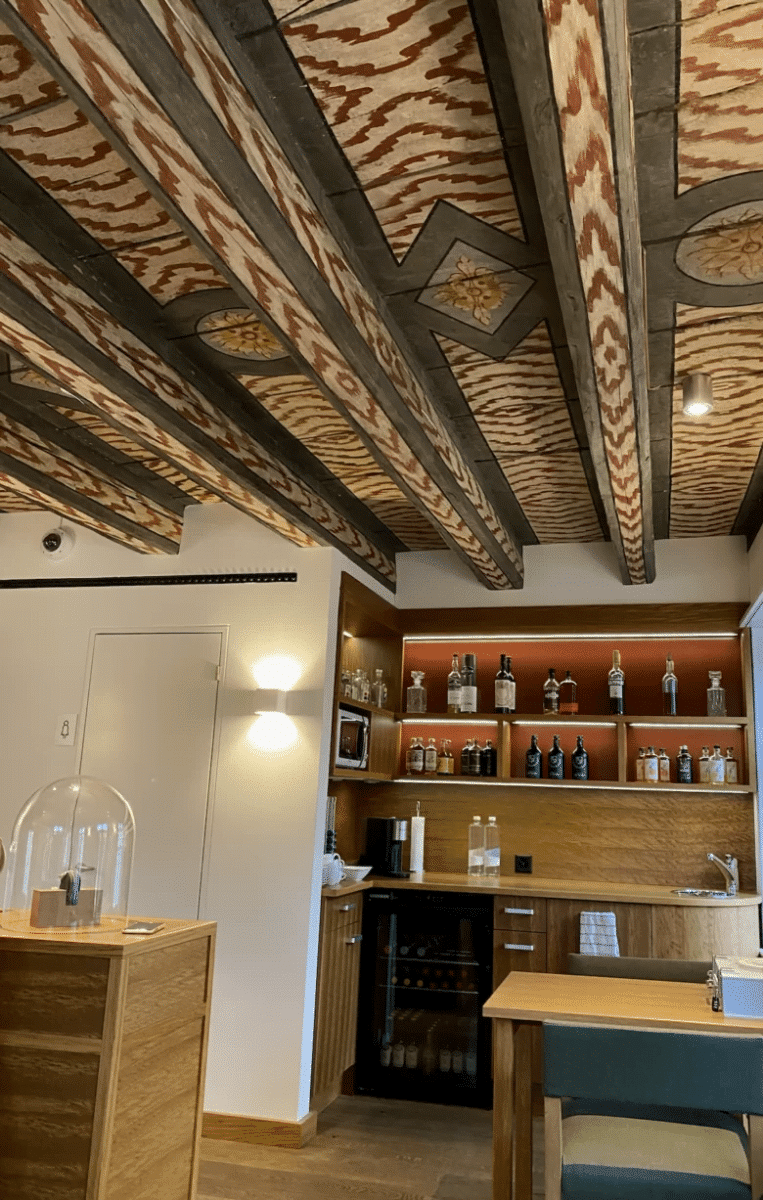

During our visit in Oris factory, I thought a lot about being local and global at the same time in Oris’ factory.
Months later, we are on our way to Switzerland again, this time to step into a village we have not been to before: We go to Oris’ factory located in the village of Hölstein in the northwest of Switzerland.
This is a slightly different journey for us; because we will see the center of a young and dynamic brand with its announced watches, events, stands and employees, even though its history dates back to 1904.


This village-town, 15-20 minutes’ drive from Basel, is not a travel destination, which means if you’re going to Hölstein, you are probably going for Oris. While you’re gone, you can dine or even stay in the nearby Bad Bubendorf, which dates back to 1830, as we did. In Hölstein, you can ride a bike in the Oris sponsored bike park, or you can sit and watch the Oris Stream for a while, after which Oris is named (not next to the factory, it’s called Frenke; I’ll talk about this later).

After the restaurant, we reach the pink building of Oris by choosing public transportation in order not to increase the carbon footprint as per the rules of the brand focused on sustainability. Oris’s Regional Director, Marco Gemperli, gives us a tour of this compact building. The store at the entrance of the building has just opened; There is no other store in this area, we are in nature. Marco explains that they opened this store to establish warmer relations with the guests who left their watches to be repaired, not as before. Helena, who greets us with a “Warm welcome” letter in Turkish, also works there; Kübra Coşgun from Oris’s Turkey distributor, Şark Saatçiler, shares the first piece of information that caught my attention: Products such as beer (we’re in the German canton, after all), gin, mustard, and jam on a shelf belong to local producers and are sold here. This is just an Oris-like move, I think to myself. One of the rules of sustainability is to support the local producer, and when you buy a product from here, you inevitably establish a bond with Hölstein. So, I just get a beer with the Oris logo on it.


Oris also recycles old deerskin for its deerskin straps. Every year, around 15,000 deer in Switzerland are culled to protect the countryside, as their populations increase so much. The environmentalist company Cervo Volante produces handmade products from deer skins to be burned. Oris also uses these deer skins in its products, starting with the Big Crown Pointer Date. “Giant automotive companies don’t take these leathers for even the smallest scratches and throw them away, little lines don’t matter to us,” says Marco.




Founded in 1904, Oris has a special bond with Hölstein. At the beginning of the 20th century, in this village where there were 40 farmers (still 43% agricultural land and today it has a population of about 3 thousand), with the rapid development of Swiss watchmaking, it was desired to establish a watch company like in its neighbor Waldenburg. In 1902 Lohner and Co. After the sudden death of the owner of the company, Paul Cattin and Georges Christian came from Grenchen, another Swiss city, and took over the factory in 1904 and named it Oris because of the Oris tea, which is the border between the Cantons of Solothurn and Basel Landschaft. Describing the brand’s cornerstones, Kevin Kohn says this tea is a little further away and was probably chosen because it’s an easier name than the nearby Frenke. The name can be read as it is written all over the world. By the way, it could have been OWC almost because of the name Oris Watch Company.
The brand changed its slogan from “Swiss Watches” to “Hölstein 1904” in 2016. Kevin explains why: “Everyone knows Oris makes Swiss watches. We also wanted to introduce our location, now everyone asks us where is Hölstein.”


They presented their Hölstein collections for the first time in 2020, in the 116 th anniversary of their establishment, and expanded their collections with 2021 and 2022 versions. The train engraving on the reverse of the Hölstein collection makes sense when it comes to it. Because this engraving refers to the train station directly opposite the building. This train carried workers from the surrounding villages and cities during the golden age of Oris.


Founded in 1904, Oris became a giant facility in 1911. Kevin shows the size of the old facility in letters from the archive, which we will see later when we leave the building. While the number of employees reached 300, Oris Hölstein, Holderbank (1906), Como (1908), Courgenay (1916), Herbetswil (1925), Ziefen (1925) factories were opened in 1929, Oris built nearly 80 lodgings for those working in the surrounding area. Although others live in these houses, they still stand.
The brand produced its first wristwatch in 1925, transforming it from a pocket watch. At this point, Kevin shares the knowledge that the first wristwatches were produced for women in the world, and later for men. As you know, the reason for the production of the first men’s wrist watches was military.
The company has only had 5 managers in 118 years, if my memory serves me right. One of them was Jacques-David LeCoultre, grandson of Antoine LeCoultre, who later merged with Edmond Jaeger to form Jaeger-LeCoultre.
As Oris watches became more and more widespread, they faced the watch law of the Swiss government on March 12, 1934. This law wanted to set the standard for Swiss watchmaking, thus preventing individual watch companies from using new technologies without permission, and from producing a piece other than what the manufacturers had produced until then. Oris, too, could not switch to using an escapement with sleeves instead of the pin escapement he always used. The one who broke this rule was Dr Rolf Portmann, a young lawyer who joined the company in 1956 after his father, who was a sales manager. After 10 years of successful press, politics and legal struggle, Portmann won the case in 1966 and saved Swiss watch history from this difficult law.

What happens next is very important, because it tells how a company that has grown so much was affected by the crisis: While Oris was one of the top 10 watch companies in the world at the end of the 1960s, producing 1.2 million watches a year with a staff of around 800, the 1970s brought Swiss watchmaking to a standstill. brings the crisis: the Quartz Crisis. In this period, Oris had to lay off most of its employees, sell the houses, and the company could barely survive. In 1970 Oris shares were sold to ASUAG, the predecessor of the Swatch Group: it is no longer independent. What saved the company was when Dr Rolf Portmann and Ulrich W. Herzog (later generations of the founder) said, “From now on, we will only produce mechanical watches.” They will now produce price-performance watches. In 1982, the company becomes independent again.
In this part, Kevin shows another brand’s ad that we see a watch on the celebrity’s wrist. It amazes me that it shows another brand, but it’s a clever approach. “When you buy watches from these brands, you give half of the money to these ads, don’t think that more expensive is better. We don’t have a famous face, when you buy a watch from us, you really pay for the watch itself, so it’s more affordable, the price-performance ratio is high.”
Kevin runs a small watchmaking workshop, has us disassemble and install a simple watch with a screwdriver and loop. It is quite a fun activity for us. It’s not uncommon for us to have ruined a watch while trying to engrave it before: All this once again shows us how detailed, arduous and masterful watchmaking is.


Oris’ factory is surprisingly small; There are really young watchmakers working inside. Marco explains that they are growing at this point, the sections are being redesigned. The store at the entrance is part of this renewal story. And again the Caliber 400 showroom upstairs. The caliber 400 is the pride of the watch company that has started to reproduce its own movement. Especially considering that this company had its own movement 279 before the Quartz Crisis, but did not produce its own movement until the hand-wound Caliber 110 in 2014. The Caliber 400 was announced in 2020: Oris continues to develop this in-house automatic, five-day power reserve, anti-magnetic and 10-year guarantee.


In the Caliber 400 exhibition hall, there are technical pieces and details such as frames from Oris history, old watchmaking tools, parts of the Caliber 400. Marco then shows us the two models they’ll be announcing in November. Showing these watches from the front makes you feel privileged.

The most interesting detail from Oris history is the alarm clocks they released in 1949. Things rattle when Kevin rings the historical alarm, which he says is involved in the lives of many seniors, including his grandmother. The brand’s followers wanted them to reproduce these alarms, Kevin says.
Today, Oris has 90 employees. It was not easy for them to get rid of the effects of the Quartz Crisis and come to these days, but today they managed to produce “attractive” watches such as the Aquis Date Upcycle, ProPilot X Caliber 400 salmon dial, as well as the functional watches called “tool watches”. I hope they increase their numbers even more because dive and pilot watches are really everywhere. We need such attractive watches.


The date we were in Basel coincided with Basel’s 1st Flâneur City Festival. Music, we went to Oris’s store in Basel between the stands.



There was also an Oris festival stand at the entrance of the store, which had a historical room, detective games, a painting room and a beer bar; Unfortunately, the watch that was put into the lottery did not come to us.
When we leave Hölstein and go up the mountain by cable car on a rainy September day, we see cows and goats around. “See the mountain over there,” Kevin says at a point where we stop. “It’s the intersection of Germany, France, and Switzerland.”
I wonder if Oris wearers are in the majority around the village. I read that in another interview. Just like Valle de Joux, this place is one of the natural wonders of the planet. As for Hölstein, it is easy to understand why Oris focuses on sustainability.